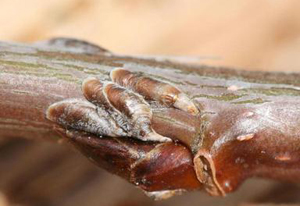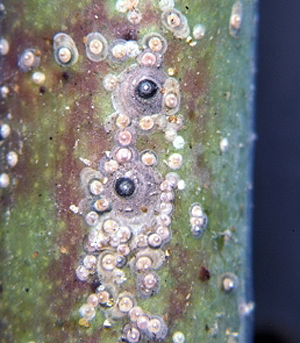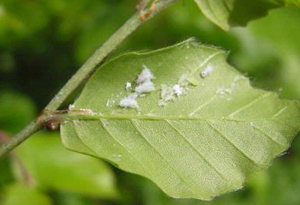Sap Feeders

Whitney Cranshaw, Colorado State University, Bugwood.org
Oystershell scales are about 1/10 inch long and resemble crusty accumulations of oyster shells on the bark. Their drab, bark-like appearance makes them easy to overlook, even on close inspection. Heavy infestations can kill twigs or branches. This scale overwinters in the egg stage under the waxy covering of the female. The eggs hatch and the crawlers are active from late May to early June.

United States National Collection of Scale Insects Photographs,
USDA Agricultural Research Service, Bugwood.org
San Jose scale is one of the most destructive scale species. Infested stems, twigs or branched may be killed and heavily infested trees may die. These small circular brown armored scales have a series of dark concentric rings on their waxy covering. There are several generations each year. First crawlers are active from late May to early June, a second generation appears in late July and a third in late summer or early fall. Heavily infested plants may have a crusty covering of scales.

Milan Zubrik, Forest Research Institute - Slovakia, Bugwood.org
Woolly beech aphids are easily recognized by their covering of wool-like strands. They are usually clustered in colonies on the undersides of leaves. Sap removal by this insect usually does not affect tree health but the liquid waste that they secrete (honeydew) accumulates on lower leaves and branches. Wasps, bees, and flies are attracted to these sweet deposits and sooty mold fungus will grow on them, discoloring leaves and branches.